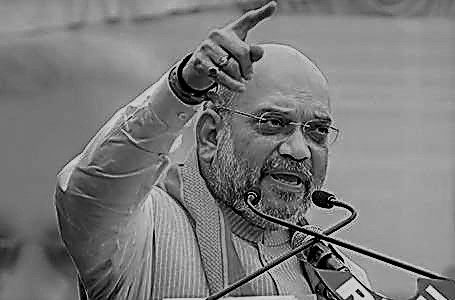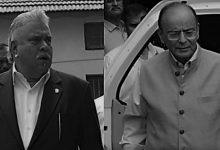Amit Shah, has claimed that the saffron party will not only increase his party’s tally in 2019 general elections — get more seats than it obtained in 2014 polls — and, thereafter, it will rule India for 50 years. The claim is ridiculous and dangerous. A report for Different Truths.
The BJP President, Amit Shah, has claimed that the saffron party will not only increase his party’s tally in 2019 general elections — get more seats than it obtained in 2014 polls — and, thereafter, it will rule India for 50 years. The assertion was made at as high a forum as the National Executive of the BJP. The claim is ridiculous and dangerous. Former BJP minister and now a rebel, Arun Shourie, has reportedly said that 2019 will be the last election. If Shourie’s observation is linked with Shah’s claim, it may mean that the country is heading for dictatorship. A writer and journalist, Shourie knows both Narendra Modi and Shah quite intimately and how their mind works.
If anyone, Shah or Modi, harbours this type of fantasy, to say the least, it is foolhardy. Democracy is firmly entrenched in India and if a dictator rises, he may know his fate. The Emergency is an example. How people threw out a popular and charismatic leader like Indira Gandhi. Though Modi has become taller than the BJP, the saffron party itself will not allow rise of a dictator. Can anybody imagine that the BJP will amend its Constitution to allow any leader, howsoever tall, a life-time head of the party?
The ground reality is, however, different; Modi has lost much of his popularity — he is not as popular as he was on the eve of 2014 poll. Schemes like “note-bandi” and GST launched by the government have proved to be disappointing. Added to that, almost daily rise of petrol and diesel prices and debt of farmers have added to the woes of the government. The general mood appears to be not in favour of government.
One wonders if Modi-Amit Shah will get a majority in 2019 election? Even if they get, it will be much below their 2014 election tally, certainly not above it as claimed by BJP President.
The 2019 contest will be between Prime Minister Modi and a dysfunctional opposition alliance. It has homed in on its strength; Modi’s popularity versus a fractured Opposition with no clear leader. The resolution adopted at the BJP’s National Executive reveals the outline of a strong, if dour, political narrative to approach the electorate. The “Ajaya Bharat, Atal BJP”slogan encapsulates it neatly; a country on the move along with BJP as its anchor. It lacks, however, the ringing optimism and confidence outreach of the ‘achhe din’ days, having instead something of a circling-the-wagons quality.
After winning 2014 elections on ‘vikas’ platform, BJP has strengthened its grip over India’s federal structure through successive electoral victories, Amit Shah’s confidence in his party’s ability to stay in power for 50 years — evoking Congress dominance between 1947 and 1989 — stems from NDA’s majority in Parliament and 20 state Assemblies. Through incessant messaging, repackaging and streamlining, Modi has also appropriated UPA-era welfare schemes, leaving Congress casting about for an agenda. Even demonetization is pitched boldly as a ”creative destruction” of crumbling corrupt economy that BJP inherited, leaving sceptics to crap that the accent has been more on the destruction part of it.
But BJP will have tougher time, explaining fuel prices, agrarian distress and slow movement on reforms. A bit more creative would have been seen BJP appropriate ongoing protests against oil and the boil — as exemplified by Bharat Bandh — to bring fuel prices under GST. That would have brilliant, a rare move that is more populist and good for economy at the same time. But policy timidity has been as much a hallmark of the current government as its aggressive politics.
If Modi is more popular than his policy, it also means a constituency for anti-Modi for anti-BJPism has emerged, but on which demands that individual opposition parties bury their divisions. Giving conflicting national ambitions, stitching state-level alliances like the brewing SP-BSP tie up in UP can give BJP a tough fight. Casting the fight as “Modi versus- the Rest” binary may be compelling proposition from BJP’s point of view. But it may not sufficiently capture the complexity of 2009 amid a debate over jobs, farmer distress, Dalit assertion, Muslim marginalization and Congress diminution.
Harihar Swarup
©IPA Service
Photo from the Internet
#Politics #AmitShah #SaffronParty #IndianGovernment #DifferentTruths





 By
By
 By
By

 By
By